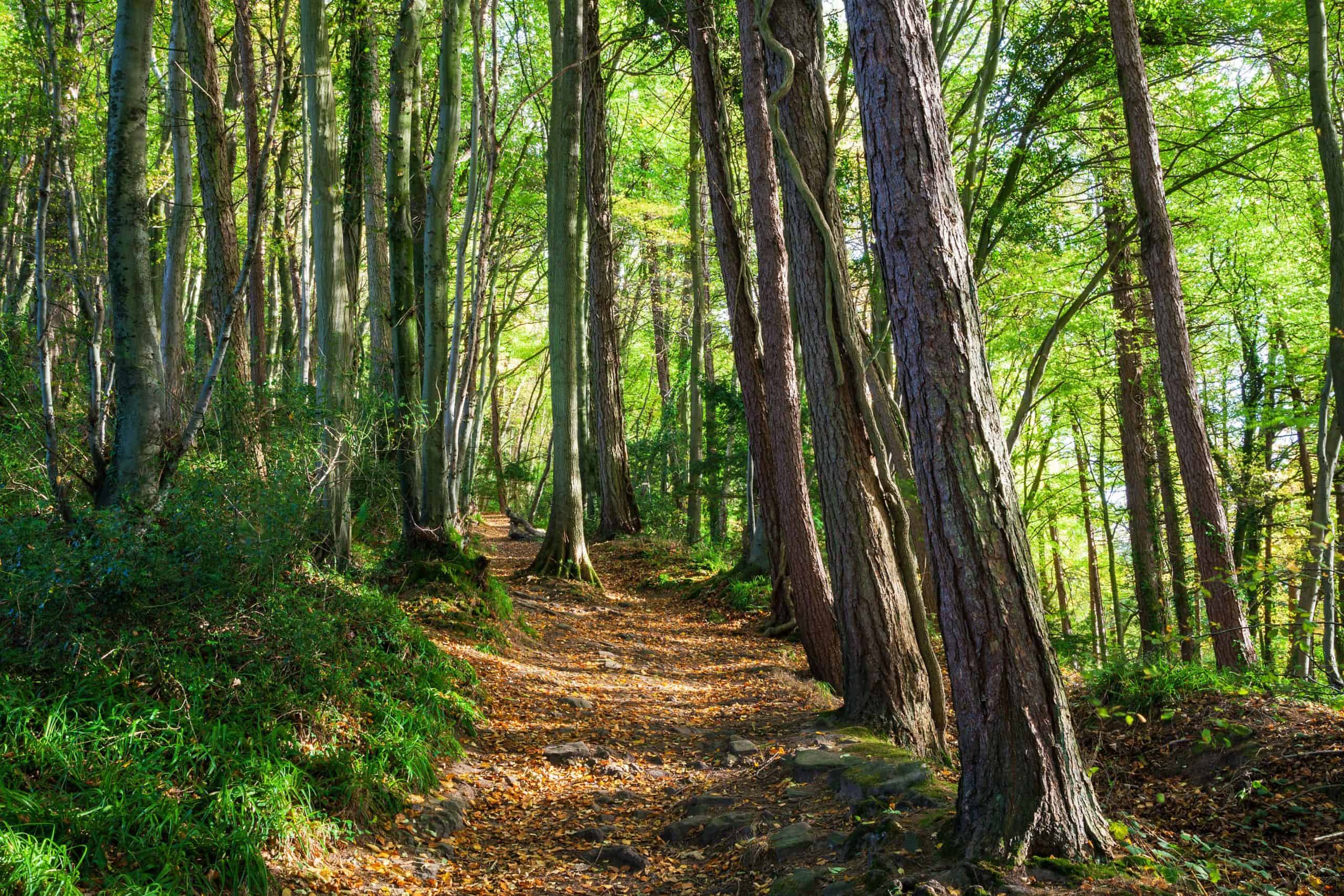
Spring is just around the corner, and with the promise of milder weather comes a new opportunity to explore the stunning green spaces that surround our historic market town.
As the gateway to the Wye Valley, there’s no better place to enjoy the great outdoors this spring, and there’s so much to love about this Area of Outstanding Natural Beauty.
As well as being home to a huge variety of wildlife – check out our guide to exploring the wildlife wonders of the Wye – the valley is well known for its abundance of ancient woodlands, a fact that makes the area even more special.
Just 2.5% of the UK is now classed as ancient woodland, which means a visit to the Wye Valley is one of only a few opportunities to see communities of plant and animal species found nowhere else in the world.
Read on to discover the best ancient woodlands to visit and what to expect from the landscape and the wildlife that call them home.
Cadora Woods
Cadora Woods showcases one of the UK’s largest collections of ancient broadleaved tree species. The 274-acre site is of great importance to the Lower Wye Valley, providing several habitats for native and migrating wildlife to set up home.
The tawny owl, emperor dragonfly, fallow deer, adder, hazel dormouse, fox, badger, brown long-eared and common pipistrelle bats, vole, and some 126 species of beetle and butterfly are just a selection of the creatures that inhabit these expansive ancient woods.
You can get closer to nature all year round at Cadora Woods, with each season offering new, utterly stunning natural scenes.
Haugh Wood
Haugh Wood is another Wye woodland that’s particularly popular with the valley’s butterfly population. The 250-hectare wood has in fact been named as a Site of Special Scientific Interest (SSSI) thanks to its 600-species strong population of butterflies and moths.
Eagle-eyed visitors may be lucky enough to spot the ultra-rare Pearl-bordered Fritillary butterfly, Wood White butterfly and Drab Looper moth, all of which thrive in the area.
There are two waymarked trails to explore the woodland’s resident butterflies and moths, with plenty of facts about the species and the important conservation work going on in Haugh Wood to learn along the way.
Coppice Mawr Wood
With just over 238 acres to explore, Coppice Mawr Wood is a beautiful broadleaf woodland that’s teeming with wildlife. Greater Horseshoe Bats are the area’s best-known residents, with the woodland a vital feeding area for the species.
As one of the UK’s largest bats – measuring the size of a pear – the Greater Horseshoe and the woodland habitats they reside in need our help more than ever as Warwickshire Bat Group explains:
“The Greater Horseshoe bat has shown a marked decline, particularly in western Europe. It is rare in Britain and now confined to southwest England and South Wales. It is estimated that the number of Greater Horseshoe bats has declined by 98% in the last 100 years. The British population is thought to number only between 4,000 and 6,000 individuals.”
And one that’s off-limits…
Lady Park Wood is one ancient woodland that you won’t be visiting on your trip to the Wye Valley. This high security, privately owned woodland is a poignant scientific experiment that has so far been 75 years in the making.
Lady Park Wood has purposefully been left untouched and neglected so woodland ecologists can study and record how woodland develops without human interference.
Explore the many habitats of the Wye Valley and surrounding areas by checking out the area’s best hikes.
